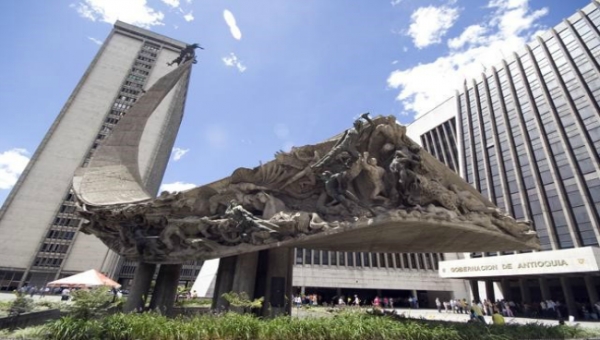National Government: Medellin Best-Managed City in Colombia

The latest annual study by the National Planning Department (DNP in Spanish initials) finds that Medellin is the best-managed city among Colombia’s 1,102 municipalities.
Behind Medellin’s 93.8 top score for over-all management – best in Colombia – was the 91.9 score for the Medellin suburb of Itagui, second-place in the DNP study.
Other cities in Antioquia department that posted relatively good scores for fiscal management or other sub-categories for municipal management were Rionegro, Envigado, El Retiro and Guatapé.
In all, 633 municipalities showed improvements in their overall performance in 2014 compared to 2013, while 44 suffer from poor management, the study found.
As for fiscal management, 749 municipalities improved their performance in 2014 versus 2013.
The departmental capital cities with the best fiscal performance were Medellin (first place, 85.5 points), followed by Bogotá with 85.1 points, according to DNP.
Besides the top-two overall management rankings for Medellin and Itagui, rounding-out the top 10 were Mosquera, Fusagasugá, Funza, Madrid, Zipaquira, Sibaté, Tabio and San Antonio del Tequendama.
The worst-run cities were San Carlos (Córdoba department); Sincé, Guaranda and Pailitas (Cesar department); San Jacinto del Cauca, Mahates, Altos del Rosario and Squid (Bolivar) and Iriguaní and New Granada (Magdalena).
DNP director Simon Gaviria said that the results of study enable the national government to take stock of the management of territorial governments, provide early warnings for poor fiscal management, and prioritize DNP technical assistance to those municipalities that have a low overall performance.
“The analysis of these results will allow the new leaders [recently elected mayors and departmental governors] to establish improvement plans” and “improve the quality of [government] investment,” Gaviria added.
Key indicators for study
According to DNP, four indicators were employed in the study:
1. Effectiveness: This indicator estimates the level of compliance with the goals contained in the Plans of Territorial Development. This measures achievements by comparing planned versus executed.
2. Efficiency: This analyzes the “proper and efficient use of resources (ratio between the products obtained and inputs used by the municipality in the process of production of goods and provision of health, education and potable water),” according to DNP.
3. Legal requirements: This indicator “assesses compliance with the territorial entities of the regulatory framework related to implementation of the resources of the General System of Units (GSP),” according to DNP.
4. Administrative and fiscal management: This indicator estimates “administrative and financial capacity of a municipality to realize the actions in each of the planning instruments designed. This indicator is defined by the average of the index of administrative capacity and the Fiscal Performance Index that measures a series of indicators related to the financial resources at the disposal of [departmental] governors and municipalities to develop their management during each term,” according to DNP.
By department, the highest score for overall performance was Huila (79.8), followed by Cundinamarca (79.6); Risaralda (78); Quindio (78) and Caldas (76.1).
Antioquia placed 18th over-all among Colombia’s departments for fiscal management, with a 72.5 score. Sucre had Colombia’s best fiscal management score, at 80.1
Municipalities in Antioquia with the poorest scores in the DNP study were Toledo, Nechi, Segovia and Caramanta.
















